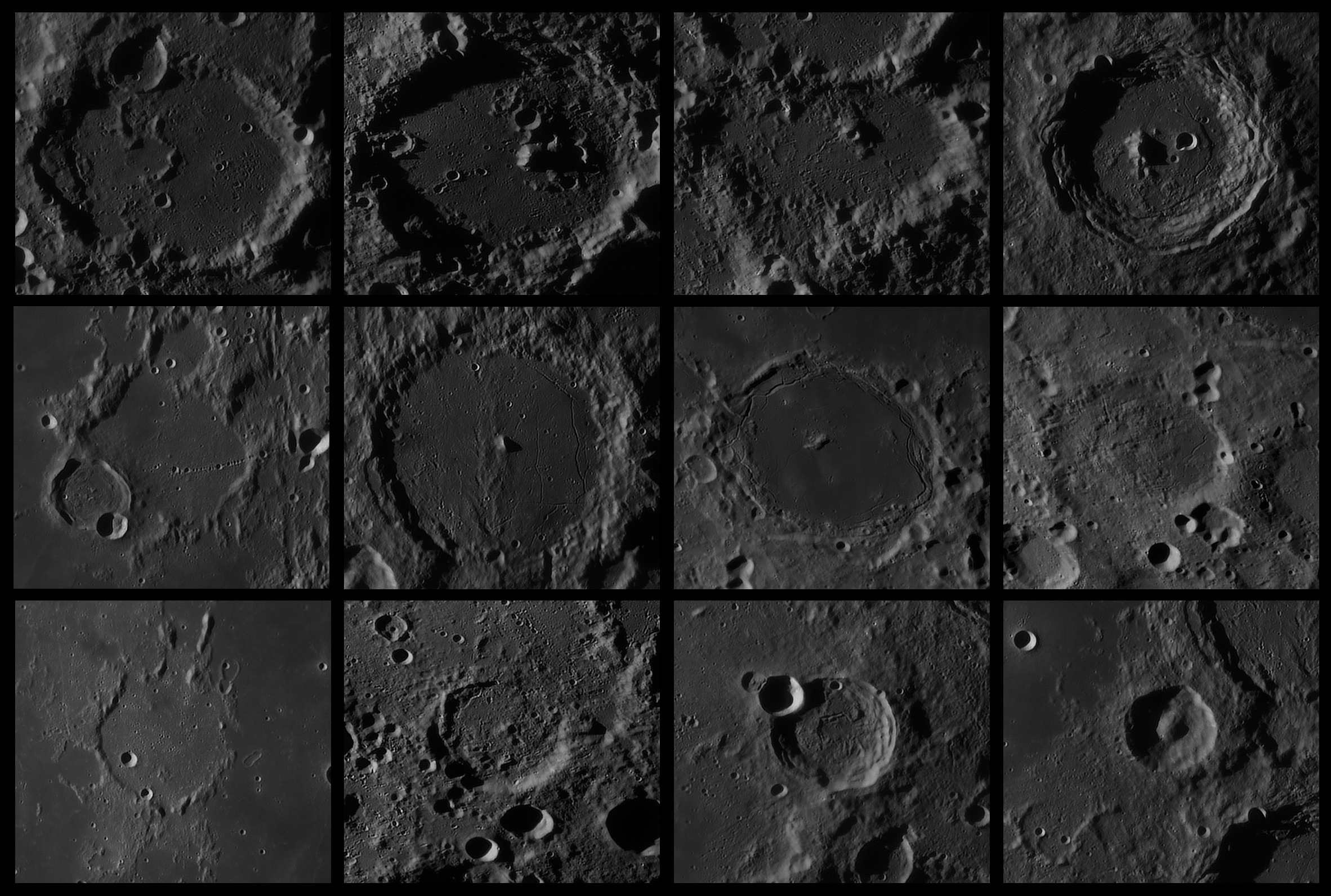
Medium large craters in focus.
In a relatively small area of the moon (900 km x 750 km) you can see many different types of craters.
We often know them by name (or not) but not all of them, there are craters that we see but do not recognize very much.
In this small area we see old and fairly young craters with or without crater walls. Some are so old that liquid lava has flooded the crater, we only see the edges of the crater.
In this type of craters we sometimes see a fine shivering system that can be observed with a medium-sized telescope. Old craters can even have a central mountain, these are visible as a small pimple in a lava soil
If you have the opportunity, it is certainly worth it to observe it visually.
Recordings have been made with a Celestron C14 in Enschede Netherlands.
From left to right:
Purbach (118 km), Walter (132 km), Regiomontanus (126 km), Arzachel (97 km).
Davy (35 km) and Carena Davy, Alphonsus (118 km), Pitatus (97 km), Wurzelbauer (88 km).
Guericke (58 km), Lexell (63 km), Thebit (57 km), Alpetragius (40 km).